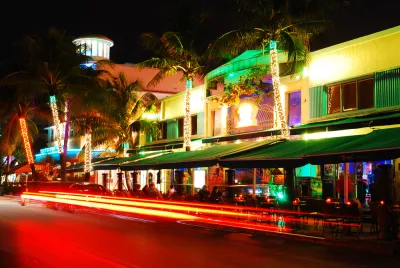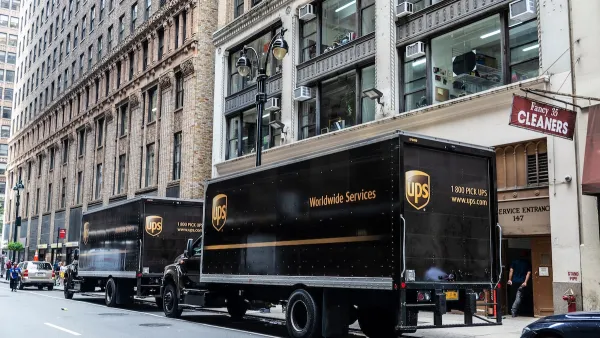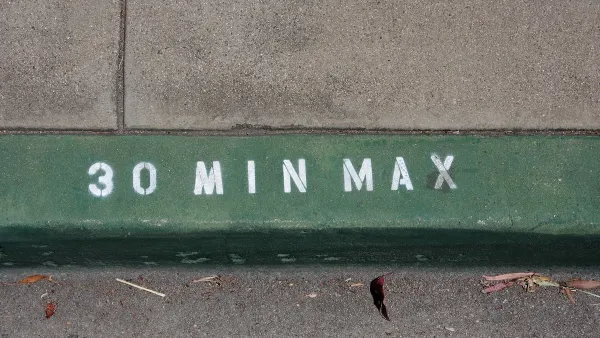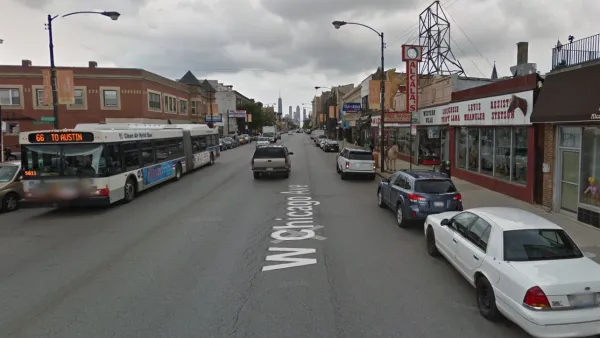Five panelists discussed the future of curbside parking and agree that there are technological and financial incentives to change priorities for these spaces.

A panel of transportation and logistics experts at the Vision Zero Cities Conference by Transportation Alternatives predicted continued and long-lasting changes in the way curbs, sidewalks, and curbside parking spaces are organized, managed, and prioritized. Since the incremental reopening of restaurants and other amenities since the onset of the coronavirus pandemic, space formerly dedicated to private vehicles is increasingly finding alternative uses.
But we have more than the coronavirus to thank for these shifting behaviors and innovations in the use of parking spaces. "That hopeful future might seem like a far-off dream for those who have sat through interminable community-board meetings where people have fought over the last inch of parking. But it’s probably achievable in the next 10 to 15 years — because technology and financial incentives will drive it," writes Eve Kessler, describing the panelists' insights.
Dynamic usage for curbside usage, according to the five panelists, will also make streets safer by reducing instances of vehicles stopping in bike lanes. The speakers heightened that technology could help drivers identify parking and avoid similarly dangerous situations. "Dawn Miller, head of policy and partnerships at the data firm Coord, said that mobile apps would soon direct deliverers — not just those in trucks, but also those in smaller vehicles — to available spaces in the last mile before a stop. Such precision would help eliminate hazards like parking in bike or bus lanes," reports Kessler.
Discussion about pricing for curb space is ongoing. Large delivery companies and small businesses alike stand to benefit from priced curb zones. "Pricing the curb would entail a balancing act for different users, the panelists agreed. Persons with disabilities, for example, should have complimentary access," Kessler writes.
FULL STORY: Vision Zero Cities: Experts Foresee Diverse Curbside Uses

National Parks Layoffs Will Cause Communities to Lose Billions
Thousands of essential park workers were laid off this week, just before the busy spring break season.

Retro-silient?: America’s First “Eco-burb,” The Woodlands Turns 50
A master-planned community north of Houston offers lessons on green infrastructure and resilient design, but falls short of its founder’s lofty affordability and walkability goals.

Delivering for America Plan Will Downgrade Mail Service in at Least 49.5 Percent of Zip Codes
Republican and Democrat lawmakers criticize the plan for its disproportionate negative impact on rural communities.

Test News Post 1
This is a summary

Test News Headline 46
Test for the image on the front page.

Balancing Bombs and Butterflies: How the National Guard Protects a Rare Species
The National Guard at Fort Indiantown Gap uses GIS technology and land management strategies to balance military training with conservation efforts, ensuring the survival of the rare eastern regal fritillary butterfly.
Urban Design for Planners 1: Software Tools
This six-course series explores essential urban design concepts using open source software and equips planners with the tools they need to participate fully in the urban design process.
Planning for Universal Design
Learn the tools for implementing Universal Design in planning regulations.
EMC Planning Group, Inc.
Planetizen
Planetizen
Mpact (formerly Rail~Volution)
Great Falls Development Authority, Inc.
HUDs Office of Policy Development and Research
NYU Wagner Graduate School of Public Service





























